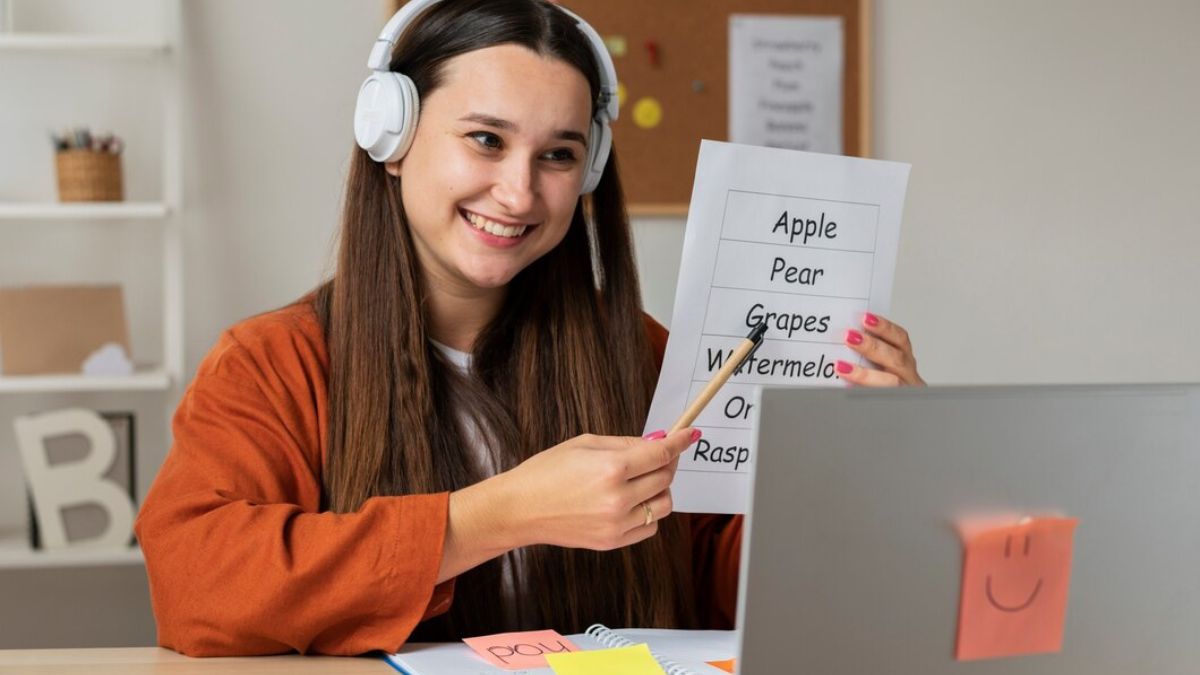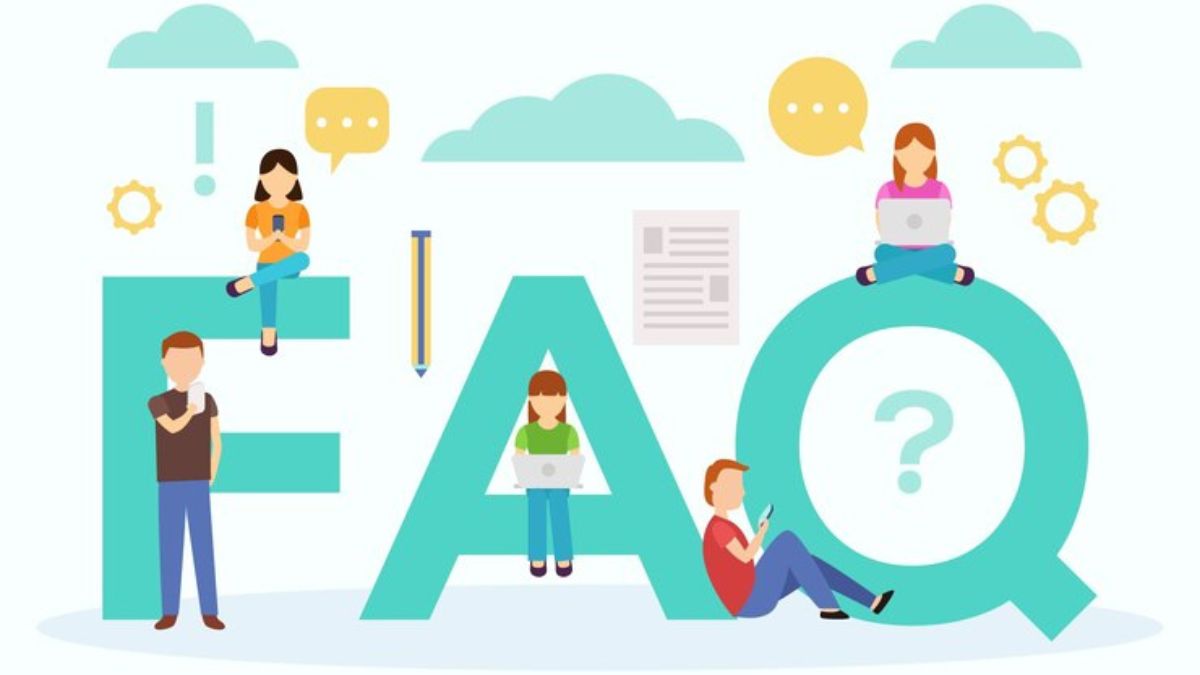TECHNOLOGY
Ceviri Demystified Crafting Accurate and Effective Translation

Introduction
Translation, or “Çeviri” in Turkish, is a bridge between cultures, a tool that allows diverse traditions and knowledge to come together. For many, this process is simply a matter of converting text from one language to another. However, the art of translation is far more nuanced, encompassing a detailed understanding of linguistic subtleties, cultural contexts, and the intended audience. This blog post aims to unravel the complexities of çeviri, offering insights on its significance, challenges, and strategies for achieving effective communication across languages and cultures. Whether you’re a language enthusiast, a student learning translation, or a business professional wanting to reach a global audience, this guide is tailored to your needs.
Understanding the Elements of Translation
Translation is more than word-for-word substitution. It’s about conveying the original message’s essence while capturing the tone, style, and intent behind it. A great translation considers syntax, grammar, and the cultural context that shaped the original text. This approach ensures that the translated piece resonates just as powerfully with the target audience as with the source audience.
Grasping the elements of translation requires an awareness of the languages’ unique characteristics involved. For instance, the use of gender in languages such as Spanish might challenge a translator working into English, which does not employ gendered nouns. Similarly, idiomatic expressions often lose their humor or poignancy when divorced from their cultural backdrop, necessitating a creative yet faithful translation approach.
Furthermore, translators must recognize regional variations. A word that is common in British English might be unfamiliar or carry a different connotation in American English. This aspect of translation reinforces the importance of cultural sensitivity and awareness in producing an accurate and faithful translation.
The Importance of Cultural Context in Çeviri
Cultural context is a bedrock of effective translation. Every culture has unique expressions, traditions, and views. A phrase or term in one language might not have a direct equivalent in another, necessitating a translator’s cultural insight to find words that relay the same idea or emotion.
Cultural understanding is particularly crucial when translating literature, where the subtler nuances of a text can significantly impact its interpretation. For example, consider translating a novel from a culture that values indirect communication into a language where directness is typical. Here, the challenge lies in maintaining the narrative’s spirit and voice without losing the cultural nuances that give it depth.
Translators often face dilemmas in maintaining cultural integrity while making texts accessible. A balance must be struck, ensuring that the translation is neither too foreign nor too domesticated. This balance helps readers appreciate the text while understanding its cultural significance.
Common Challenges in Translation
While translation can seem straightforward, it presents a host of challenges that require knowledge and skill to overcome. Linguistic differences, cultural nuances, and contextual discrepancies can make the process complex and demanding.
One major challenge is handling idioms. These figures of speech often defy literal translation, necessitating a flair for creativity. A popular English saying like “killing two birds with one stone” might need a localized equivalent in Turkish to capture its meaning without resorting to awkward explanations.
Maintaining the tone and style of the original text is another challenge. A business document’s formal tone, a novel’s whimsical language, or a campaign’s persuasive elements must be preserved in translation to maintain the intended impact on the audience.
Lastly, the speed and efficiency required in many professional translations can lead to errors or loss of detail. Balancing quality and speed is crucial for meeting deadlines while ensuring the final product is meticulous and precise.
Types of Translation Services
Translation services come in varied forms, each appropriate for different contexts and needs. Business translation might prioritize accuracy and formality, whereas literary translation values creativity alongside precision.
Legal translation is a specialized field where precision is crucial. Any error can lead to significant misunderstandings or misinterpretations, making it essential for translators in this field to have legal expertise alongside linguistic skills.
Technical translation involves converting technical documents, such as manuals or instructions, into other languages. This requires not just language expertise but also an understanding of the technical field’s specific terminology and concepts.
Another type is audiovisual translation, which includes subtitling and dubbing. Such services go beyond verbal translation, requiring the translator to consider timing, delivery, and synchronization, ensuring the translated material fits within the original media’s constraints.
The Role of Technology in Translation
Technology has transformed the translation landscape, offering tools that enhance accuracy and efficiency. Translation software, such as computer-assisted translation (CAT) tools, streamline the process by providing translators with glossaries, translation memories, and automated suggestions.
Machine translation services, like Google Translate, offer rapid, albeit sometimes flawed, translations. While these tools are invaluable for understanding a text’s gist, they often lack the human touch needed to address cultural nuances, tone, and style.
The development of AI in translation is a significant advancement, promising more refined and sophisticated translations over time. However, human translators remain essential for quality, as AI still can’t fully capture the nuances of language or emotion.
Best Practices for Effective Çeviri
For those looking to excel in translation, whether professionally or personally, there are several best practices worth following. Firstly, translators should immerse themselves in both languages’ cultures, understanding not just words but the contexts in which they are used.
It is also crucial to maintain a balance between literal and free translation. While some texts demand a word-for-word approach, others benefit from a more liberal interpretation to capture the intended meaning more effectively.
Finally, peer review and feedback are invaluable for honing translation skills. Engaging with other translators can provide new perspectives, highlight nuances that may have been missed, and ensure accuracy and consistency across projects.
Building a Successful Translation Career
For aspiring translators, several steps can be taken to build a successful career. Developing proficiency in multiple languages is the foundation, but specialization in a field like law, medicine, or literature can make a translator more competitive and sought after.
Networking with other professionals and participating in translation workshops can also bolster one’s skills and career prospects. These connections often lead to job opportunities and provide ongoing support and learning.
Another aspect is maintaining a strong portfolio, showcasing a range of translated works to demonstrate skills and versatility. A well-curated portfolio can be the deciding factor for clients seeking skilled and reliable translators.
Tools and Resources for Translators
Various tools and resources enhance a translator’s work, offering support and improving efficiency. Online dictionaries and thesauri are essential for quick reference, providing instant access to definitions, synonyms, and pronunciation guides.
CAT tools like SDL Trados and memoQ help streamline workflow by storing previously translated phrases, ensuring consistency and saving time. These tools are especially useful for large projects where consistency across documents is crucial.
Professional organizations, such as the American Translators Association or the International Federation of Translators, offer resources, certification, and networking opportunities. Being part of such organizations can provide added credibility and support throughout a translator’s career.
Impact of Çeviri in Global Communication
Translation’s impact extends far beyond personal communication; it plays a pivotal role in global interactions and understanding. It has the power to connect businesses with international markets, facilitate cultural exchanges, and contribute to global peace by fostering mutual understanding.
Companies expanding into foreign markets rely on translators to adapt their marketing materials, contracts, and product information, ensuring they resonate with diverse audiences while avoiding cultural pitfalls.
Cultural exchanges, whether through translated literature, film, or music, allow individuals worldwide to engage with diverse perspectives, fostering empathy and unity across borders.
Case Studies of Successful Translation
Examining successful translation cases provides valuable insights into the profession’s power and intricacy. For example, the translation of J.K. Rowling’s Harry Potter series into dozens of languages achieved immense success, with translators capturing the fantasy and whimsy without losing cultural relevance.
Another case is the adaptation of global advertising campaigns, where careful translation and localization have enabled brands to connect effectively with local audiences, achieving global reach without sacrificing local appeal.
Successful diplomacy often hinges on precise translation to ensure agreements and treaties are understood and honored, highlighting translation’s vital role in international relations.
Future Trends in Translation
The translation field is continually evolving, with trends to watch including increased integration of AI and machine learning, progress in real-time translation capabilities, and greater emphasis on cultural preservation within translation projects.
As technology advances, the line between human and machine translation may blur, potentially leading to hybrid approaches that combine AI’s efficiency with human translators’ nuanced understanding.
Furthermore, there’s growing recognition of the role of translation in preserving minority languages and cultures, ensuring that these voices remain vivid and influential in a digitally connected world.
Final Thoughts
Translation is central to navigating and connecting our increasingly globalized world. Whether for business, art, or diplomacy, effective çeviri enables communication, fosters understanding, and celebrates the rich diversity of human expression. To bring these insights to life, aspiring translators should invest in developing their skills, immersing themselves in different cultures, and engaging with communities of like-minded professionals. Above all, they should remain curious and open, continuously honing their craft to bridge linguistic and cultural divides. For those interested in deepening their understanding of translation, numerous resources, including workshops, certification programs, and community forums, await to guide them in their learning and practice.
TECHNOLOGY
Everything You Need to Know About Uhmegle

Have you heard about Uhmegle? This fascinating platform is making waves in the digital world, offering a fresh and exciting way to connect with strangers all over the globe. Imagine sparking unexpected conversations, sharing thoughts, and meeting people entirely out of your routine! Whether you’re looking for new friendships, exploring unique perspectives, or just having some casual chats to brighten your day, Uhmegle is the perfect virtual hangout spot.
If you’re curious about what makes Uhmegle so special and how you can make the most of this platform, you’re in the right place! Stick around, and I’ll give you the lowdown—from how it works to handy tips to elevate your experience!
What Is Uhmegle?
Uhmegle is an online platform that connects users randomly via text or video chat. Think of it as an adventure in social exploration! With just one click, you’re paired with someone from anywhere in the world, and your conversation could go in any direction, from casual chats to thought-provoking debates.
The beauty of Uhmegle lies in its spontaneity and accessibility. There’s no need to create an account or fill out a lengthy form. Simply log in, hit “start,” and voilà—you’re instantly immersed in an interactive space full of possibilities!
It’s free to use, and you can chat anonymously, which is a fun twist for those looking to connect without sharing all their personal details upfront. But don’t worry—there are tools and safety features in place to ensure that your time on Uhmegle remains enjoyable and secure.
Why Uhmegle Stands Out
Curious about what sets Uhmegle apart from other social platforms? Here are some reasons why people can’t stop raving about it!
1. Genuine Spontaneity
There’s a thrill in not knowing who you’ll meet next. Will it be a traveler from Japan, an artist from Italy, or someone navigating the same career challenges as you? Every click opens the door to a new story, new ideas, and a fresh perspective.
2. A Global Audience
Uhmegle connects people from across borders, giving you the chance to interact with other cultures, languages, and lifestyles. It’s like having the entire world at your fingertips—literally.
3. User-Friendly Design
It couldn’t be easier to use! No confusing layouts or overwhelming options. The simplistic interface lets you focus on what really matters—connecting with people.
4. A Break from Social Media Drama
Unlike traditional social media, where likes, shares, and comments can dominate the experience, Uhmegle is free of that noise. It’s just about chatting, connecting, and being authentic.
5. Private, Fun, and Dynamic
With optional anonymity and tools like filters to refine who you chat with (think specific interests), Uhmegle adds a layer of personalization while maintaining a casual, fun atmosphere.
How to Use Uhmegle Like a Pro
If you’re ready to give Uhmegle a spin, here are some quick steps to get you started, plus tips to make it a memorable experience!
Step 1: Visit the Platform
Simply head to the Uhmegle website. There’s no need to download anything!
Step 2: Pick Your Chat Preferences
Choose whether you want to chat via text or video. Both options have their charm—texting is low-key and discreet, while video chat lets you see the person behind the screen, making interactions even more dynamic.
Step 3: Hit Start
Click “Start,” and you’re instantly paired with a random individual. It’s that simple!
Step 4: Engage with Curiosity
Start the conversation with an open mind. You never know what you might learn or who you might meet! Pro tip? Begin with a fun icebreaker, like “What’s the most unexpected thing you’ve done this week?”
Step 5: Stay Respectful and Safe
Use Uhmegle’s built-in tools—like the “Stop” button or reporting options—to keep the experience positive. Respect boundaries, and if a conversation isn’t vibing, feel free to move along. There’s always a new connection waiting!
Bonus Tip!
Make use of Uhmegle’s interest filters. Want to find someone who shares your passion for cinema or game design? Add those as your interests and get matched with like-minded individuals in a snap!
Who Should Try Uhmegle?
Uhmegle is perfect for anyone who loves discovering new things about the world or simply enjoys a good conversation. Are you a student looking to practice a new language? Jump on Uhmegle. An introvert wanting to find meaningful interactions without leaving your comfort zone? Uhmegle’s got you covered.
Even busy professionals can use Uhmegle as a quick mental escape during their day. It’s versatile, exciting, and, best of all, entirely inclusive.
Safety Tips for Enjoying Uhmegle
While Uhmegle aims to make connections fun and safe, here are a few measures to keep in mind while you explore the platform.
- Stay Anonymous: Avoid sharing personal details like your full name, address, or phone number. Keep your privacy intact!
- Use the Tools Provided: If a conversation gets uncomfortable, make use of the “Stop” button to leave the chat or block/report inappropriate behavior.
- Be Respectful: Remember, the other person is also there for a positive experience. Treat them with kindness and respect.
- Supervise Younger Users: If teens or minors in your household are interested in using the platform, ensure supervised usage to maintain a safe online environment.
Why You Should Give Uhmegle a Try
If you’ve been feeling disconnected lately or simply want to add a spark of adventure to your day, Uhmegle could be the solution. Without any commitments or complicated sign-ups, it’s an easy, fun way to expand your horizons and make meaningful connections.
Every chat has the potential to surprise you—whether you gain a new friend, a fresh perspective, or even an unexpected laugh! Why wait? Click, connect, and start exploring the world one conversation at a time.
TECHNOLOGY
TekGPS Login Guide, Everything You Need to Know

Efficient GPS tracking is essential for businesses and individuals looking to monitor vehicles, assets, or personnel. TekGPS Login is a reliable platform that provides a powerful suite of GPS tracking solutions, enabling users to manage their tracking needs effectively. If you’re facing challenges or need clear guidance on how to log in and access your TekGPS account, this blog is for you.
We’ll cover the essential steps to successfully log in to TekGPS, address common troubleshooting issues, and discuss tips for secure account management.
What is TekGPS?
TekGPS is an advanced GPS tracking service that provides businesses and individuals with tools to monitor their assets in real-time. The platform caters to fleet managers, logistics companies, and individuals who require precise location tracking. TekGPS offers features such as:
- Real-time GPS tracking for vehicles, equipment, or personnel
- Detailed reporting on routes, stops, and activity history
- Alerts and notifications for critical events (e.g., unauthorized movement or idling)
- User-friendly interface for managing multiple devices or fleet systems
Before you can take full advantage of TekGPS’s features, you’ll need to successfully access your account through the login process.
How to Access Your TekGPS Account
Step 1: Navigate to the TekGPS Login Page
- Open your preferred web browser (e.g., Chrome, Firefox, Safari).
- Visit the official TekGPS login page. This is typically available at www.tekgps.com/login (make sure the link is secure, indicated by “https://”).
- Bookmark the login page for easier access in the future.
Step 2: Enter Your Credentials
- On the login page, locate the fields for your username and password.
- Enter the email address or username associated with your TekGPS account in the appropriate field.
- Input your password carefully. Passwords are case-sensitive, so ensure that “Caps Lock” is not turned on.
Step 3: Click “Log in”
- Once your login credentials are entered, click the “Log in” button.
- If everything is correct, you’ll be redirected to the TekGPS dashboard, where you can access tracking data and other features.
Troubleshooting TekGPS Login Issues
If you encounter challenges while logging in, here’s how to resolve common problems quickly.
Forgotten Password
- Click the “Forgot Password?” link on the login page.
- Enter your registered email address to receive a password reset link.
- Check your inbox (and spam folder), follow the instructions in the reset email, and create a new password.
- Return to the login page and use the new password to access your account.
Account Locked
- If your account is locked due to multiple failed login attempts, wait a few minutes and try again later.
- Alternatively, contact the TekGPS support team to unlock your account.
Incorrect Credentials
- Double-check your username/email and password for typos.
- Update saved passwords in your browser or password manager if they are outdated.
Browser Compatibility Issues
- Ensure that you’re using an updated version of your web browser.
- Clear your browser’s cache and cookies before logging in again.
Tips for Secure Account Use
Keeping your TekGPS account safe is critical to protecting your assets and sensitive tracking data. Follow these tips to improve account security.
1. Use a Strong Password
- Create a password that includes a combination of uppercase and lowercase letters, numbers, and special characters.
- Avoid using easily guessed information like birthdays or common words.
2. Enable Two-Factor Authentication (2FA)
- If TekGPS supports 2FA, enable this feature to add an extra layer of security. You’ll be required to enter a verification code sent to your phone or email.
3. Log Out After Each Session
- Always log out of your account when using a shared or public device to prevent unauthorized access.
4. Regularly Monitor Activity
- Review your account’s activity logs and GPS tracking reports to ensure there are no unauthorized changes.
Optimizing Your TekGPS Experience
Once logged in, take advantage of TekGPS’s full range of features to maximize efficiency.
Explore Your Dashboard
The TekGPS dashboard offers a bird’s-eye view of all your assets and their statuses. Familiarize yourself with the interface to manage your devices effectively.
Set Up Alerts and Geofencing
Enable notifications for specific events, like when a vehicle leaves a designated area. Geofencing features can enhance security and operational awareness.
Analyze Reports
TekGPS provides detailed reports on movement, stops, and fuel usage. Use these insights to improve fleet efficiency and reduce costs.
Final Thoughts
TekGPS is your partner in advanced GPS tracking, offering powerful tools to simplify asset monitoring and fleet management. By following the steps outlined in this guide, you can easily log in to your TekGPS account and tackle any issues that come your way.
Got questions about your tracking setup? Visit the TekGPS support page for detailed FAQs or contact their customer service.
TECHNOLOGY
What is 70537865 Allis? Understanding Its Significance

Introduction
Numbers can be cryptic, but some carry specific and meaningful designations. One such number is 70537865 Allis, which might pique curiosity for those coming across it. What does it signify? Is it related to technology, machinery, or a cataloged product? This blog post unpacks what 70537865 Allis represents, its context, and its importance. Whether you’re a professional searching for clarity or a curious reader wanting precise information, this guide is here to simplify your understanding.
A Deep-Dive Into 70537865 Allis
What Does “70537865 Allis” Refer To?
At its core, 70537865 Allis is recognized as a part number associated with Allis-Chalmers Corporation, a company historically known for manufacturing industrial equipment such as tractors, engines, construction tools, and power systems. This specific designation refers to a machine part, typically cataloged to streamline ordering, repairs, or replacement processes.
Quick facts about Allis-Chalmers:
- Founded in 1901, Allis-Chalmers became a global leader in machinery manufacturing.
- The company has roots in agriculture, mining, and power generation industries.
- While it ceased as an independent entity in 1999, its equipment and parts remain widely utilized and supported.
Why Are Part Numbers Important?
Part numbers like 70537865 Allis ensure smooth operations for various industries by helping:
- Identify specific components for equipment maintenance.
- Standardize inventory records, avoiding confusion with similar parts.
- Simplify communication between manufacturers, distributors, and end-users.
For businesses and repair professionals, a precise part number is critical to ensuring compatibility, quality, and operational efficiency when dealing with intricate machinery.
The Applications of 70537865 Allis
1. Equipment Repairs and Maintenance
Machinery in agriculture or construction is subject to wear and tear. A part number like 70537865 Allis could play a key role in:
- Replacing worn-out components: Ensuring machines continue to function efficiently.
- Streamlining repairs: Helping technicians locate the correct replacement quickly.
2. Machinery Upgrades
Older Allis-Chalmers equipment often requires augmentation to match modern standards. Knowing the right part number simplifies upgrades while ensuring historical machines maintain their operational legacy.
3. Understanding Legacy Equipment
For those researching or working with legacy machinery, having specific identifiers like 70537865 Allis can:
- Provide historical insights into machine models.
- Support equipment documentation and archival efforts.
Where to Find 70537865 Allis Parts?
Primary Sources:
- OEM Support Channels:
Though Allis-Chalmers no longer operates independently, many companies still supply its parts. AGCO Corporation, a prominent agricultural manufacturer, is often referenced for Allis-Chalmers product support.
- Distributors and Dealers:
Numerous third-party vendors specialize in legacy equipment and can provide part numbers like 70537865. Examples include:
- Industrial and agricultural equipment retailers.
- Specialized online platforms for obsolete or hard-to-find parts.
Secondary Markets:
- Used Parts Dealers:
Companies dealing in recycled or refurbished Allis-Chalmers parts often hold uncommon numbers like 70537865.
- Online Marketplaces:
Platforms like eBay, Craigslist, or machinery-focused e-commerce websites sometimes stock rare parts for niche buyers.
Tips for Searching and Ordering
- Verify the Part Number:
Double-check the part number (70537865) before purchasing to ensure compatibility with your equipment.
- Look for Manufacturer Documentation:
Check maintenance and operation manuals to confirm the need for this specific part.
- Choose Reputable Vendors:
It’s crucial to work with sellers who guarantee the authenticity and quality of legacy parts.
How to Maintain Equipment Using 70537865 Allis
Once you’ve acquired parts like 70537865 Allis, proper application and maintenance help extend their lifespan. Here’s how:
- Follow Manufacturer Guidelines:
Install parts per the machine’s operation manual to avoid misuse.
- Schedule Regular Inspections:
Routine checks can preemptively detect wear and address issues early.
- Use Compatible Tools:
Always use tools designed for the specific machinery to ensure proper handling.
What Makes Allis-Chalmers Relevant Today?
While Allis-Chalmers ceased operations over two decades ago, its machines and parts, such as 70537865 Allis, continue to impact industrial, construction, and agricultural functions. Their durability and reliability have made them treasured by enthusiasts and professionals alike. The simplicity provided by original part numbers remains a testament to the company’s legacy of precision and customer-focused engineering.
Final Thoughts – Navigating Legacy Machinery with Confidence
The significance of 70537865 Allis lies not just in its part number but in its role in preserving operations for Allis-Chalmers machinery. Whether in a field, construction site, or archive, understanding these numbers helps unlock the full potential and historical value of equipment.
For those who rely on such parts, take the first step to optimize your machinery today by partnering with reputable suppliers and adhering to industry-maintained best practices.
-

 TECHNOLOGY5 months ago
TECHNOLOGY5 months agoRevo Technologies in Murray Utah Leading the Charge in Tech Innovation
-

 NEWS4 months ago
NEWS4 months agoKuttymovies7: Everything You Need to Know
-

 NEWS4 months ago
NEWS4 months agoShari Ann Chinnis Indianapolis: A Profile in Passion and Dedication
-

 CRYPTO5 months ago
CRYPTO5 months agoCrypto Goldmine Exploring FintechZoom’s Top Picks
-

 TECHNOLOGY5 months ago
TECHNOLOGY5 months agoRiding the Waves of Innovation Deep Offshore Technology’s Impact on Ocean Exploration
-

 CRYPTO5 months ago
CRYPTO5 months agoExploring the World of Cryptocurrency with NewZnav
-

 NEWS5 months ago
NEWS5 months agoThe Secret World of CFBWH and Why It’s Taking Over
-

 EDUCATION5 months ago
EDUCATION5 months agoThe Future of Learning with Educational Assistants
